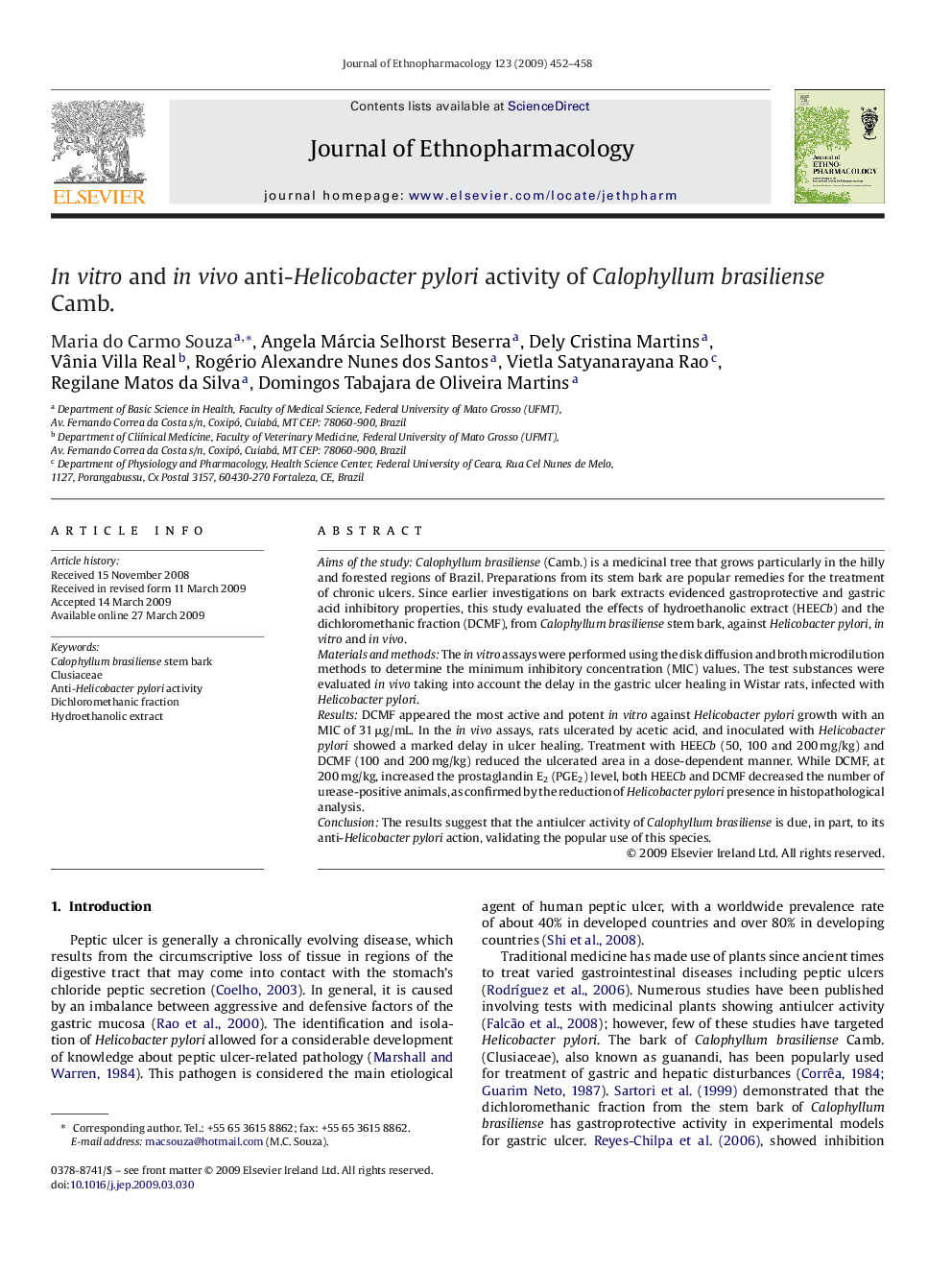| Article ID | Journal | Published Year | Pages | File Type |
|---|---|---|---|---|
| 2546399 | Journal of Ethnopharmacology | 2009 | 7 Pages |
Aims of the studyCalophyllum brasiliense (Camb.) is a medicinal tree that grows particularly in the hilly and forested regions of Brazil. Preparations from its stem bark are popular remedies for the treatment of chronic ulcers. Since earlier investigations on bark extracts evidenced gastroprotective and gastric acid inhibitory properties, this study evaluated the effects of hydroethanolic extract (HEECb) and the dichloromethanic fraction (DCMF), from Calophyllum brasiliense stem bark, against Helicobacter pylori, in vitro and in vivo.Materials and methodsThe in vitro assays were performed using the disk diffusion and broth microdilution methods to determine the minimum inhibitory concentration (MIC) values. The test substances were evaluated in vivo taking into account the delay in the gastric ulcer healing in Wistar rats, infected with Helicobacter pylori.ResultsDCMF appeared the most active and potent in vitro against Helicobacter pylori growth with an MIC of 31 μg/mL. In the in vivo assays, rats ulcerated by acetic acid, and inoculated with Helicobacter pylori showed a marked delay in ulcer healing. Treatment with HEECb (50, 100 and 200 mg/kg) and DCMF (100 and 200 mg/kg) reduced the ulcerated area in a dose-dependent manner. While DCMF, at 200 mg/kg, increased the prostaglandin E2 (PGE2) level, both HEECb and DCMF decreased the number of urease-positive animals, as confirmed by the reduction of Helicobacter pylori presence in histopathological analysis.ConclusionThe results suggest that the antiulcer activity of Calophyllum brasiliense is due, in part, to its anti-Helicobacter pylori action, validating the popular use of this species.
